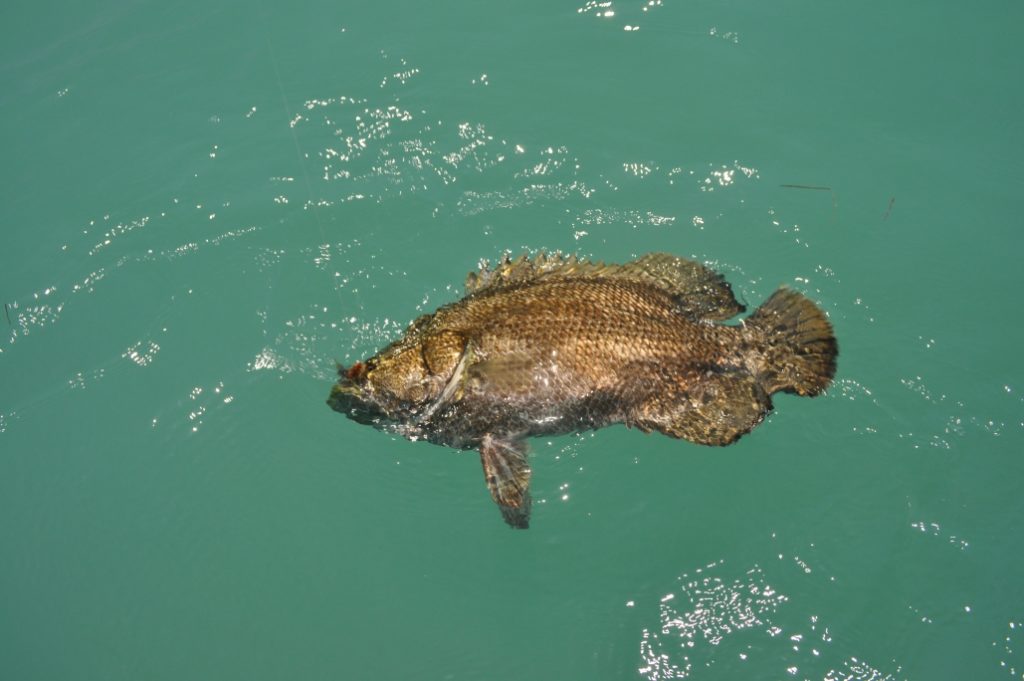
Tripletail roam the world’s subtropical and tropical waters, both offshore and inshore, usually relating to some sort of structure — floating or otherwise. Off U.S. coasts, they’re most abundant from Georgia through Texas, with Florida being the epicenter of tripletail fishing from late fall until spring.
This past fall and winter, anglers fishing Florida’s Indian River Lagoon (IRL) tapped into a terrific, yet unexpected tripletail bite that lasted for weeks. I’ve taken plenty on fly over the years, but mainly down south, in Florida Bay, sight fishing around crab trap floats or free-floating patches of seagrass and other flotsam.
In the east central part of the Sunshine State, where I now live, targeting tripletail is more of a blind fishing opportunity that entails dredging sinking flies a bit deeper in the water column around channel markers or dock and bridge pilings, where the fish seem to hang most of the time. There are days, however, when tripletail sunbathe around such structures, which makes them easier to fish on fly.
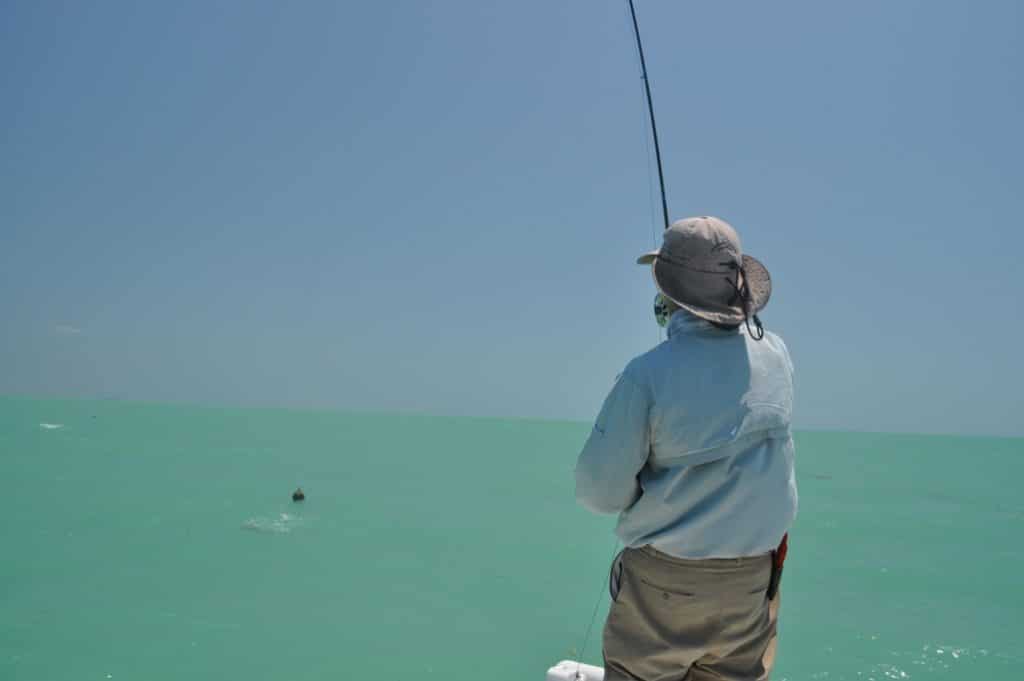
The Hunt
Wherever traps are set for crabs or lobster is a great place to start. The drill is simple: Cruise at planing speed along a line of trap floats, looking for tripletail hovering just under the surface. Don’t run too close to the floats. Instead, follow a course that keeps your boat at at least 40 or 50 feet to one side or the other of the floats to avoid spooking the fish. Be sure to pick the side that gives you the best sun angle for spotting. Keep in mind, however, that the fish may sometimes be floating several yards away.
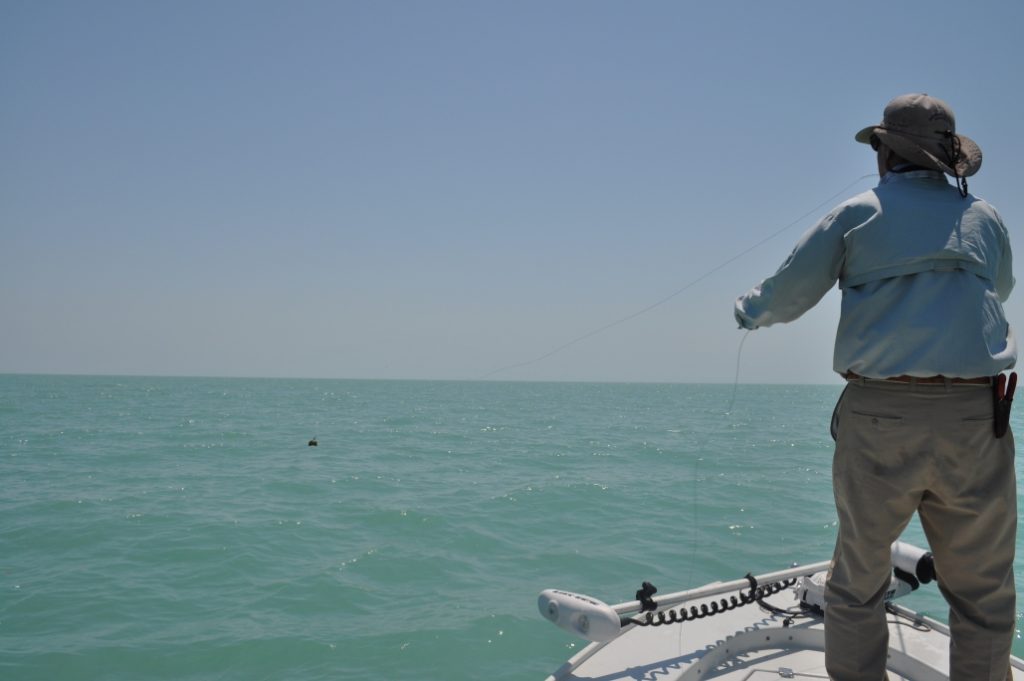
On slack tide, when the chance of food coming their way greatly decreases, you will see fewer fish. But if there are baitfish at the surface, the odds of finding tripletail improve greatly. I also find that the longer a trap has been in the water, the more likely that sagassum or other floating grasses will tangle in the line just below the float. This provides more shelter for the small baitfish and crustaceans tripletail covet. Of course, two floats tethered together are usually better than one. Although tripletail lay on their sides mostly, they often nose up to the crab floats or ropes when the tide is strong, facing the current to grab whatever forage it brings their way. This makes obvious how to present your fly. The closer a tripletail is to a float or trap line, the more challenging it is to put the fly where it will get the fish’s attention without spooking it or snagging the rope.
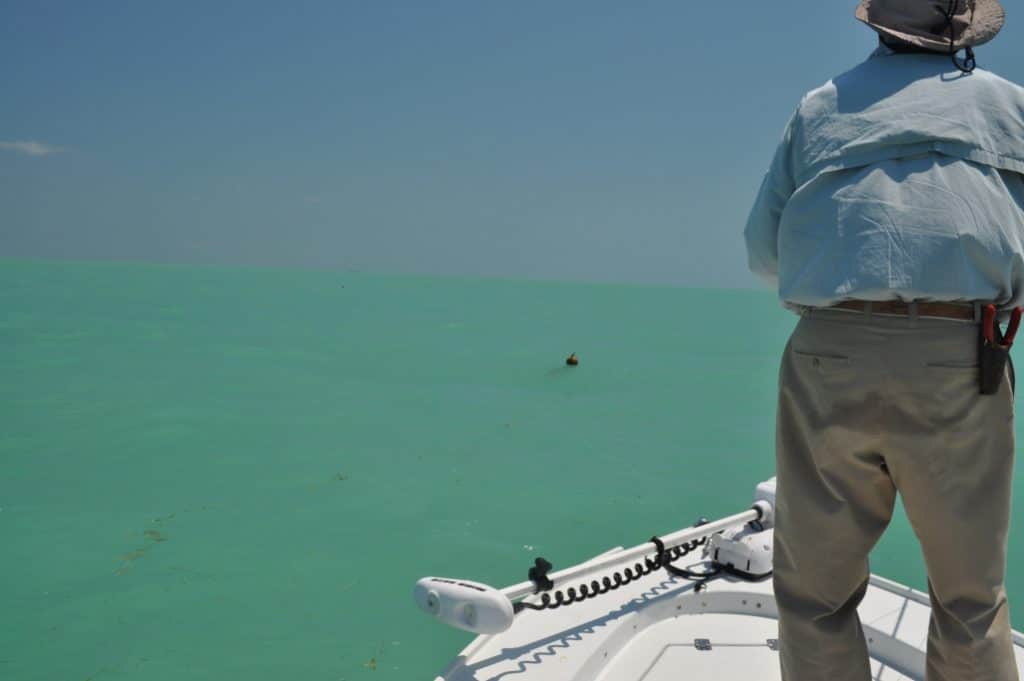
Approach and Battle
I always approach a sighted tripletail via my electric trolling motor, or if I think the wind and tide will carry me into casting range, I just shut down my outboard and drift. I prefer the electric because it lets me hold the boat in place during casting. If the fish is right at the surface, I place my fly so that it swings into the fish’s feeding window. Sometimes the strike is immediate, and other times the fish may leave the trap float in pursuit. When a fish tracks the fly, let it overtake the offering. But if the tripletail follows for a distance without taking, don’t keep stripping, as the fish could get too close to your boat and spook. It’s better to pull the fly from the water, allow the fish to swim back to the float, then close in for another cast. Sometimes, you can stop stripping and allow the fly to sink to prod the fish into committing. Keep your line taut as the fly sinks to detect the strike. If a fish refuses the fly after a couple of presentations, change flies or cast a different one on another rod rigged ahead of time. I normally carry one rod rigged with a crab fly and another with a baitfish pattern.
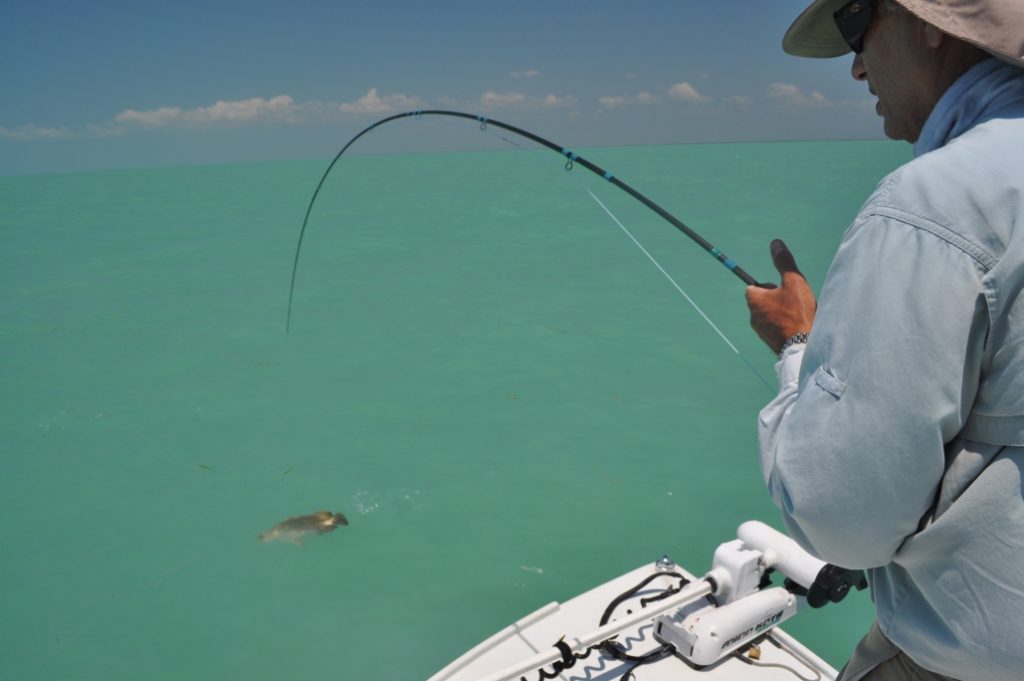
Upon hooking up, be ready for a jolting first run, and do your best to muscle the fish away from that trap line right away. A 10-pounder or larger fish will impress you with its ability to run, change directions, and even jump. Once you gain the upper hand, the tripletail will make a few more short runs, so it’s essential to get the fish to the safety of open water, well away from structure early on. Use a net to land the fish, and be very careful about those fin spines and gill plates —they can inflict serious damage.
Once crab and lobster seasons are over, when you’ll no longer find trap floats on the water, switch your attention to weed lines and other flotsam such as floating logs, inshore or off. Tide lines on an otherwise debris-free surface can often hold a few fish as well.
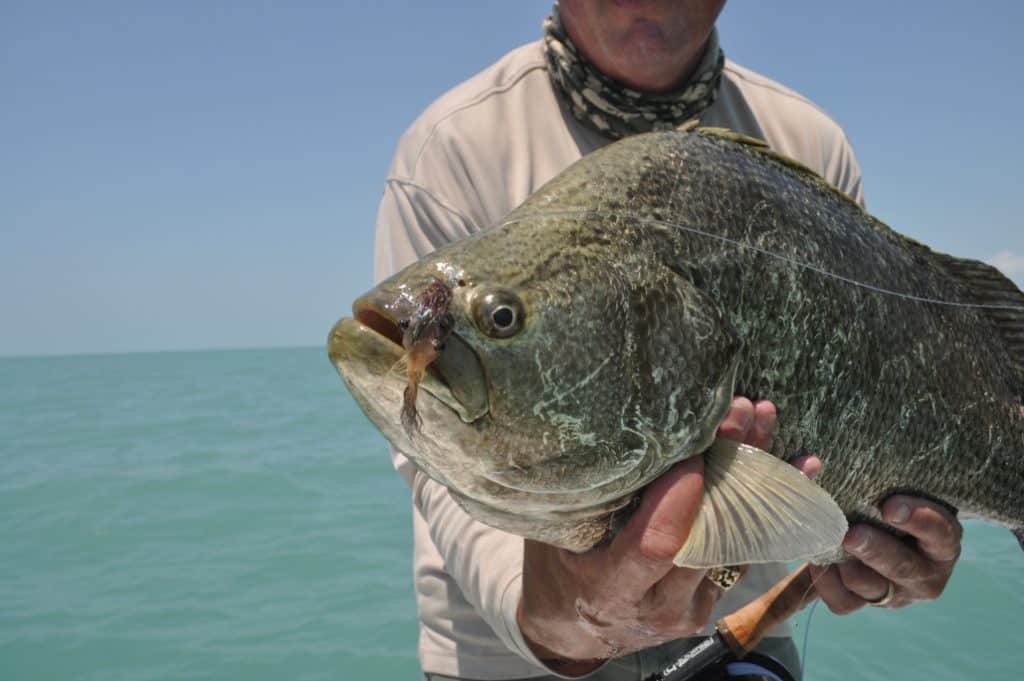
Fly Tackle, Lines and Leaders
Fish at least an 9-weight outfit. If the fish are bigger than 10 pounds (they commonly reach 15 pounds and specimens weighing 20 plus are a possibility), pick up a 10-weight to put the boots to ‘em around channel markers and trap float lines. Offshore, however, you may get away with using lighter rods if you find fish free-floating.
Floating fly lines are ideal for tripletail duty because you can pick up your fly and leader more easily for the next cast. But when fishing likely haunts and fish are not showing on top, choose a slow-sinking line to get a bit deeper faster. Tripletail are not leader shy so I keep my leaders short — 7 to 8 feet, particularly if it’s windy, or when casting heavily weighted flies, like some crab patterns or Clouser Minnows. And since this species has a raspy mouth and sharp gill plates, I opt for a bite tippet in the 25- to 40-pound-test range, because the fish can rub or foul your leader on structure during battle. Unless you’re pursuing class-tippet records, it’s best not to use a lighter tippet.
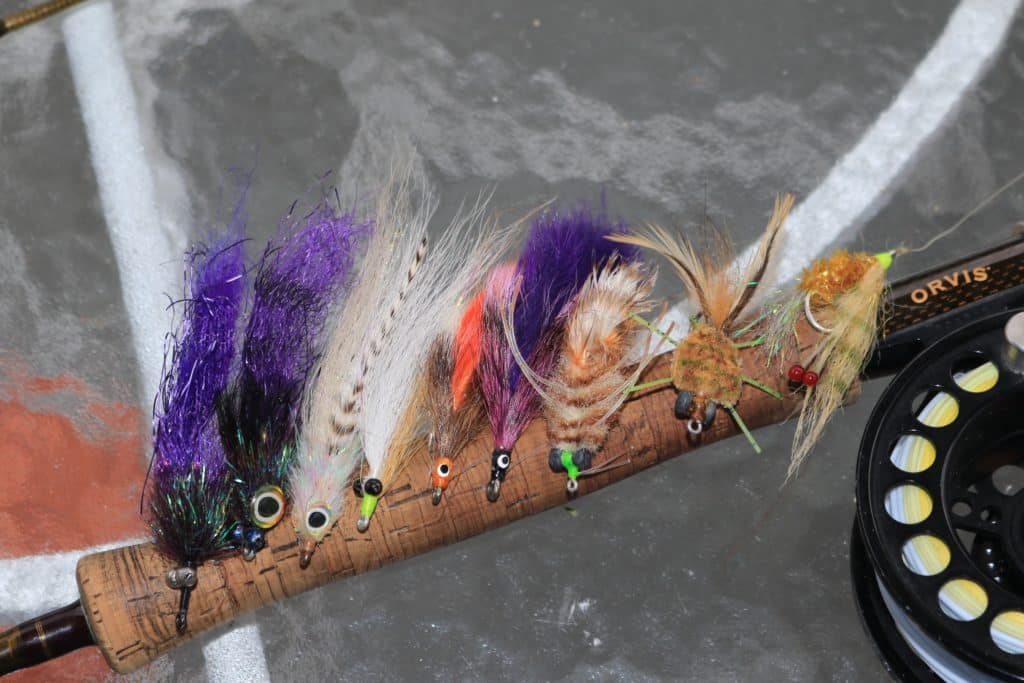
Fly Selection
Tripletail are opportunistic, ambush feeders, so baitfish, shrimp and crab fly patterns all work well. As for best fly colors, they span the gamut from white to black, but natural color schemes are safe bets. The right choice depends on light conditions, water clarity and the whims of the fish. If restricted to only 5 flies, I’d pick a Del’s Merkin crab in either olive green or black, a white Woolhead Mullet, a tan-and-white Clouser Minnow or Half-n-Half, a purple EP baitfish, and an EP Shrimp. Anything similar will work, and I like to carry unweighted versions as well as some weighted with either lead fuse wire or dumbbell eyes.
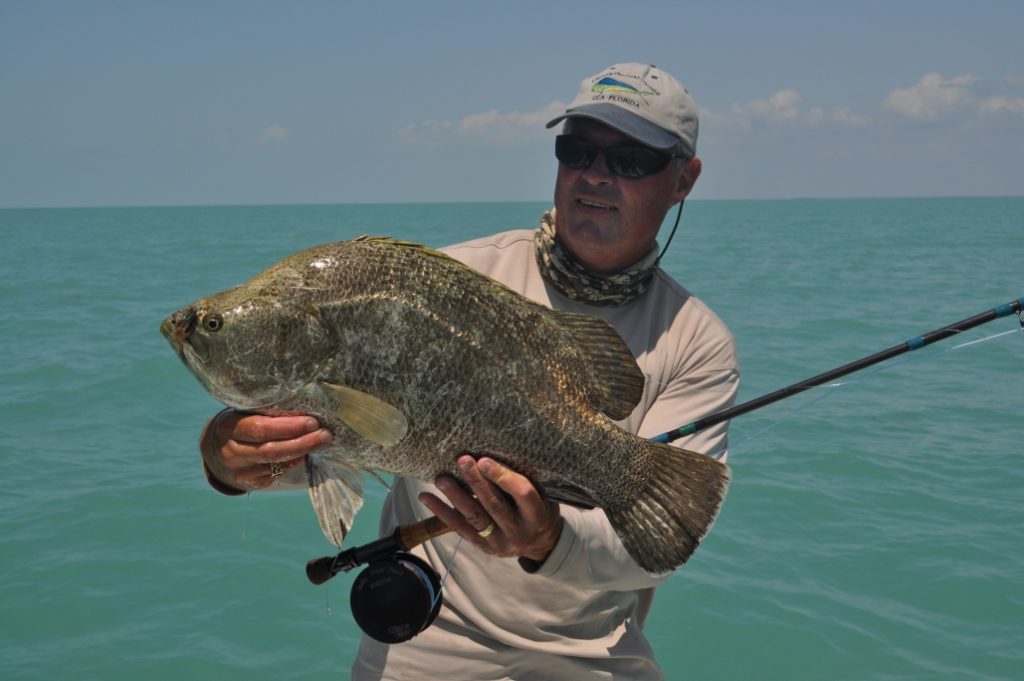
Good Eats
Tripletail ranks high on the culinary chart, and its clean, white flesh lends itself to numerous preparations. On the lean side, but rich, moist and medium-firm, the fillets can be fingered and fried, blackened, sauteed, baked, broiled or grilled with equally delicious results.
Be warned. however, that you are going to earn your dinner. Tripletail are tough fish to fillet, especially without excellent knives. Getting through the fish’s armor (the tough scales and skin) takes effort, but the payoff is definitely worth it.









